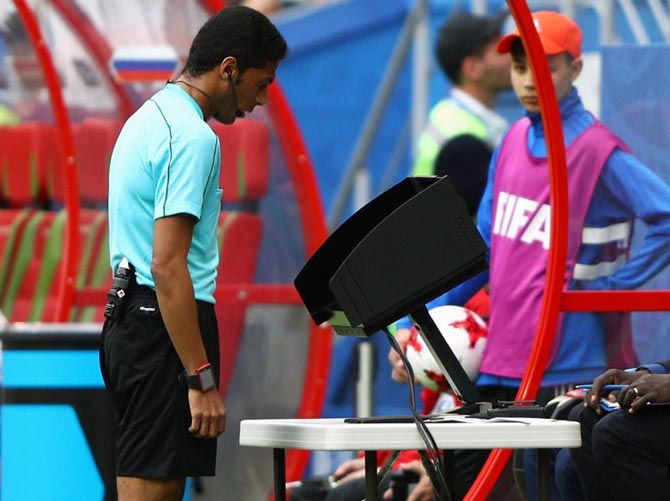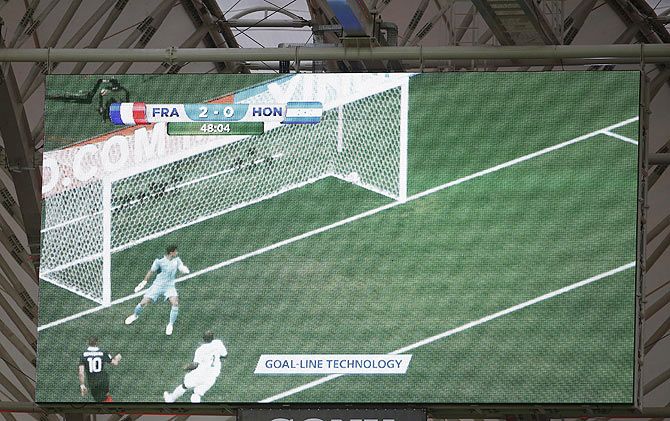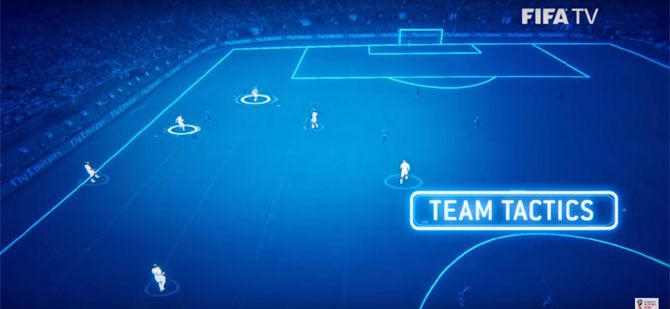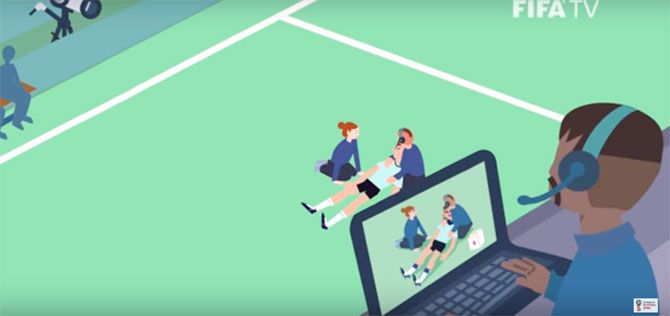Technology that could change football in coming years.
Goal-line made its debut at the 2014 World Cup in Brazil, the 2018 contest in Russia will see three more systems that could change the game in coming years.
Rediff.com's Norma Godinho explains the tech gizmos we will see at the 2018 FIFA World Cup.
Video Assistant Referee

Video Assistant Referees (VARs) will be deployed for the first time at the FIFA World Cup in Russia.
VAR is based on broadcast and audio equipment and despite controversy over the system -- which has been termed time-consuming and lack of information for spectators -- the use of VAR was approved by the International Football Association Board earlier this year.
The system allows the referee or the video assistant to review decisions where a 'clear and obvious' error is spotted.
The technology was adopted on a trial basis in Germany's Bundesliga and Italy's Serie A this season and some English FA and League Cup games, among others.
According to FIFA, referees at the World Cup 'can decide to rely on the verbal information from the video assistant referee or to review the video footage of the incident in question themselves on the side of the field of play on a monitor before making their decision.'
Goal-Line Technology

Introduced in the 2014 World Cup, this modern tool has been well accepted by the footballing community.
It was used for the first time in a World Cup game to decide if the ball had crossed the line during France's clash with the Honduras -- the beneficiary of the technology being French star Karim Benzema.
A shot from Benzema cannoned off the post and back across the face of goal before Honduran goalkeeper Noel Valladares inadvertently pushed it towards his own net.
Despite his desperate efforts to scramble the ball clear, the referee awarded the goal with the aid of technology provided by German company GoalControl to put France 2-0 ahead -- France eventually won that match 3-0.
All stadia in Russia will be equipped with goal-line technology using images from 14 high-speed cameras that send a signal within 1 second to the referee's watch indicating when the ball has crossed the goal line.
Electronic Performance & Tracking Systems

Another technological upgrade that the International Football Association Board agreed to implement at the contest in Russia.
The Electronic Performance and Tracking Systems -- or ETPS -- devices can record player and ball positions on the field.
It has been used in training sessions for many years, but this is the first time ETPS will be used in a match situation.
This is wearable technology, a communication device allowing real-time interaction that will help participating teams' technical and medical staff.
According to FIFA, 'technical and medical staff will have dedicated workstations on the media tribune and a dedicated line to communicate with the coaching and medical staff on the bench.'
'Positional data from two optical tracking cameras located on the main tribune that track the players and ball will be available to the analysts in real time alongside live footage from selected tactical cameras.'
Medical Analyst

Again, a technical device for the medical staff.
Teams can have a medical analyst to review match footage frame by frame to analyse collisions and injuries.
According to FIFA, 'the medical team has access to a radio communication system enabling communication between the medical analyst on the media tribune and the medical team in the technical area or the pitch.'











